Rear Brake Pad And Rotor Replacement
Car Brake Pad And Rotor Replacing Procedure
FOR PREVIOUS PART GO TO PART 1
Step 16 - Once the caliper has been retracted, insert the caliper mounting bracket over the rotor.
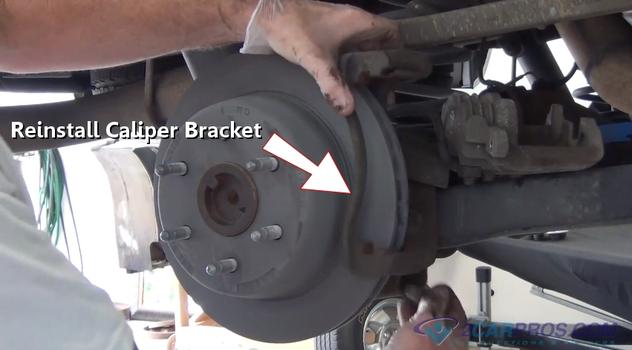
Install Caliper Bracket
Step 17 - After fitting the caliper bracket into place, insert the mounting bolts and tighten.

Tighten Bracket Mounting Bolts

Install Caliper Bracket

Tighten Bracket Mounting Bolts
Step 18 - Next, remove worn pad stabilizer clips from the caliper mounting bracket using a small screwdriver.
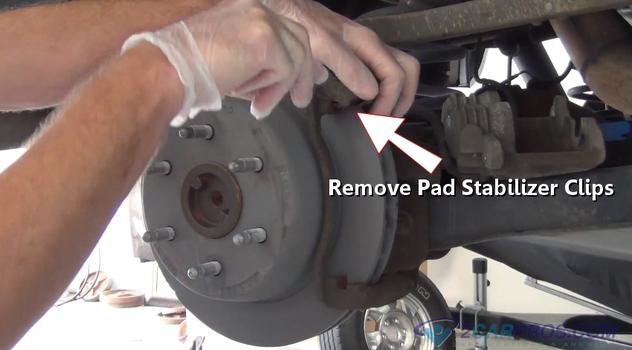
Remove Stabilizer Clip
Step 19 - After removing both upper and lower clips, install new clips, premium brake pad sets include these clips.
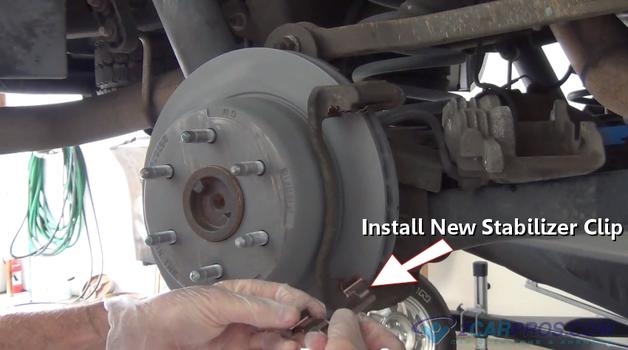
Install New Stabilizer Clips
Step 20 - Then, remove the brake pads from the box and match to the worn pads to ensure proper fit.

New Brake Pad Set
Step 21 - Install new brake pads into the caliper bracket while keeping the stabilizer clips in place.
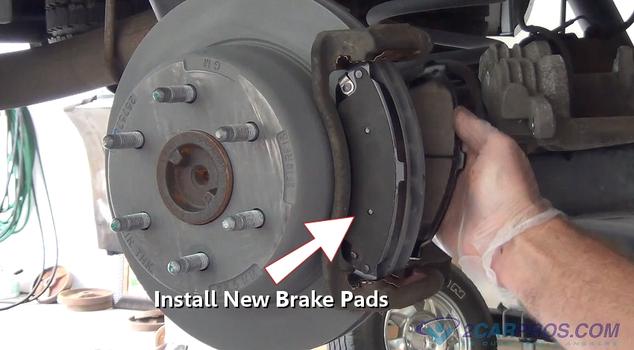
Install New Brake Pads
Step 22 - Some brake calipers utilize a pressure clip which should be replaced if provided or damaged, these clips help hold the brake pads securely while not in use.
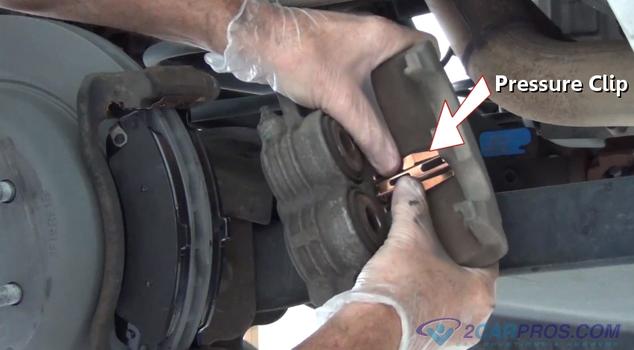
Install Pressure Clip
Step 23 - Next, install the brake caliper onto the brake pads, while retracting the brake caliper slides.
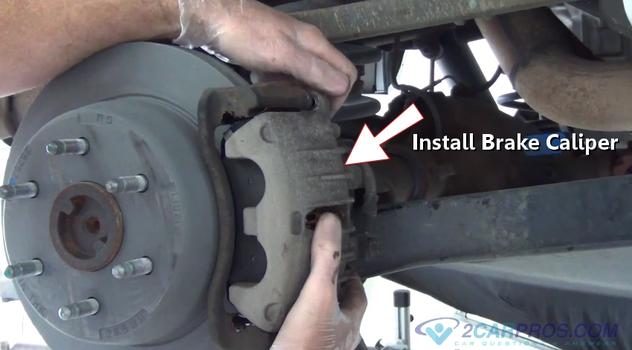
Installing Brake Caliper

Remove Stabilizer Clip

Install New Stabilizer Clips

New Brake Pad Set
Step 21 - Install new brake pads into the caliper bracket while keeping the stabilizer clips in place.

Install New Brake Pads

Install Pressure Clip

Installing Brake Caliper
Step 24 - Once the caliper is in place, reinsert the caliper mounting bolts and tighten securely.
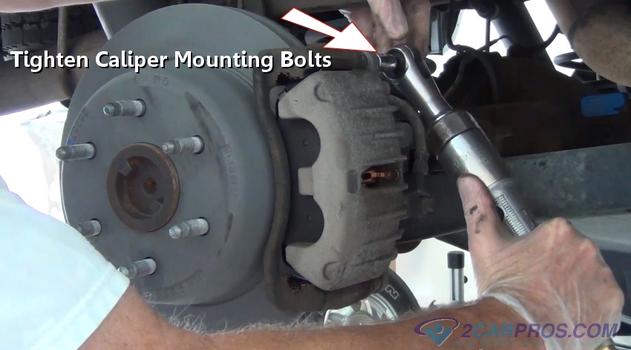
Tighten Caliper Bolts
Step 25 - After the caliper mounting bolts are securely fastened, lift the tire into place.

Reinstall Tire
Step 26 - Then, install lug nuts while checking thread quality, never lubricate lug nuts.

Install Lug Nuts
Step 27 - After install all lug nuts onto the wheel studs, tighten lugs evenly in star pattern to manufactures specifications. (Note: Air impact set to 70 foot pounds.)
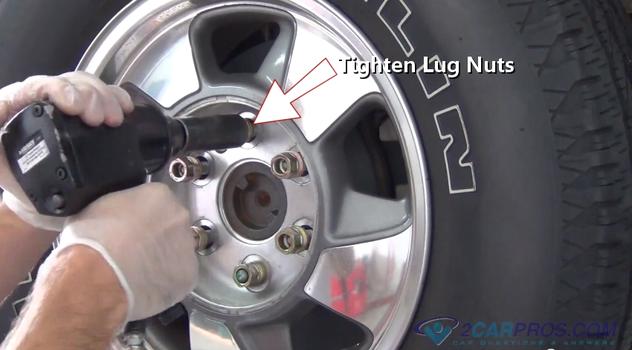
Tighten Lug Nuts
Step 28 - Once the lug nuts are tight, reinstall the lug nut cover.
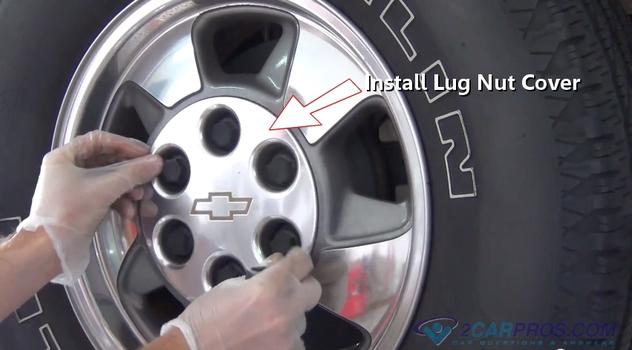
Install Lug Nut Cover
Step 29 - Tighten lug nut cover into place.
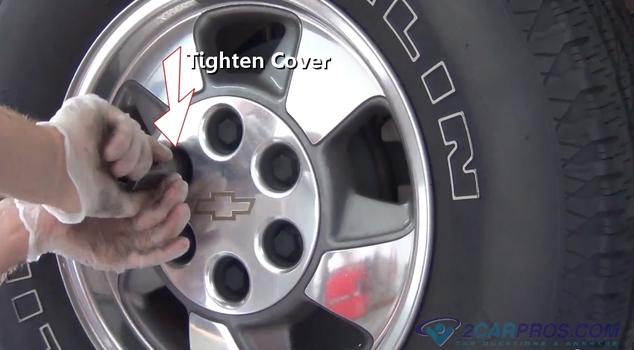
Tighten Lug Nut Cover
Step 30 - Slowly press the brake pedal down, then, slowly allow the pedal to return to its original position. This will bring the brake pads to the rotor, initiating contact.

Press Brake Pedal
After completing the job check the brake pedal operation. Because the system was never opened, brake bleeding should not be necessary, but if the pedal is spongy,bleed the brake system. Never operate a vehicle without normal brake pedal operation. While driving the vehicle, listen for strange noises as this is an indication of a problem in which repairs will need to be performed. Inspect brake fluid levels in the brake master cylinder. Brake pad design configuration may vary slightly, but the concept is the same

Tighten Caliper Bolts

Reinstall Tire

Install Lug Nuts
Step 27 - After install all lug nuts onto the wheel studs, tighten lugs evenly in star pattern to manufactures specifications. (Note: Air impact set to 70 foot pounds.)

Tighten Lug Nuts

Install Lug Nut Cover

Tighten Lug Nut Cover

Press Brake Pedal
Comments
Post a Comment